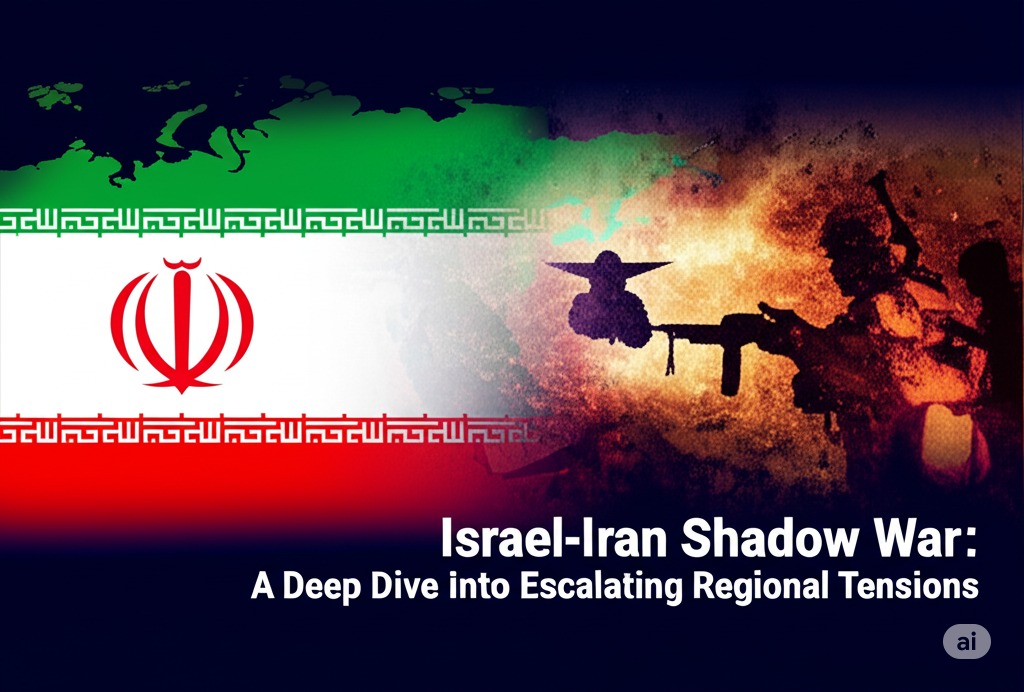Israel-Iran Shadow War: A Deep Dive into Escalating Regional Tensions
Published on June 6, 2024 | Generated by AI
 🤖 AI-generated Image
🤖 AI-generated Image
Why It Matters
The long-standing rivalry between Israel and Iran has intensified significantly, moving beyond a mere proxy conflict into overt, albeit limited, direct confrontations. This escalating tension is a critical flashpoint in the Middle East, threatening broader regional stability and involving a complex web of state and non-state actors, including Hezbollah, Hamas, and various militias supported by Iran. The core issues at stake include Iran's nuclear program, its support for regional proxies challenging Israeli security, and Israel's determination to prevent Iran from establishing a military foothold near its borders. The current climate of instability, fueled by ongoing conflicts in Gaza and Syria, amplifies the risks of miscalculation and uncontrolled escalation between these two regional powers.
Background & Timeline
The roots of the Israel-Iran conflict shifted dramatically after the 1979 Islamic Revolution in Iran, transforming a relationship of strategic cooperation under the Shah into one of deep ideological animosity. Iran subsequently adopted a policy aimed at challenging Israel's existence, primarily through supporting militant groups like Hezbollah in Lebanon and Hamas in the Palestinian territories. The conflict largely unfolded as a "shadow war" for decades, characterized by covert operations, cyberattacks, and proxy confrontations, particularly in Lebanon and Syria where both countries sought to expand influence. Key milestones include Israel's invasions of Lebanon, the rise of Hezbollah as a significant military force, and the Syrian civil war which became a direct arena for Israeli strikes against Iranian and Iran-backed forces. Concerns over Iran's nuclear program have also been a central point of contention, leading to international sanctions and alleged sabotage efforts. For historical context on key regional dynamics, see reports from bodies like the UN Security Council.
What’s Happening Now
- April 13, 2024: Iran launched hundreds of drones and missiles directly at Israel in retaliation for a strike on its consulate in Damascus, Syria. Most were intercepted by Israel and its allies.
- April 19, 2024: Israel reportedly conducted limited strikes near Isfahan, Iran, targeting an airbase, signaling a calibrated response to Iran's earlier attack.
- Ongoing: Frequent Israeli airstrikes continue against suspected Iranian and Hezbollah targets in Syria, aiming to prevent the transfer of advanced weapons and the consolidation of Iranian influence.
- Maritime Incidents: Continued reports of tit-for-tat attacks on commercial vessels in regional waters suspected of links to either country.
- Nuclear Program: International monitors report continued advancements in Iran's uranium enrichment activities, raising alarms in Israel and among Western powers.
What Could Happen Next
-
1. Continued Shadow War with Elevated Risk – Reason and expected consequences: Both sides remain reluctant to engage in full-scale war but continue low-level direct and proxy attacks. This scenario is likely as it allows both to project strength without incurring catastrophic costs. Consequences include sporadic but intense flare-ups, continued regional instability, and the constant risk of miscalculation leading to unintended escalation.
2. Limited Direct Escalation – Drivers and risks: A significant incident, such as a high-profile assassination or a major attack on critical infrastructure, could trigger a more direct, but still contained, military exchange. Drivers include domestic pressures, perceived red lines being crossed, or a breakdown in communication. Risks involve potential expansion of targets, involvement of proxies, and pressure on regional and global powers to intervene.
3. De-escalation through External Mediation or Internal Shifts – Low probability with justification: A significant shift in leadership or policy in either country, or concerted diplomatic efforts by major global powers (e.g., US, European nations) could potentially lead to a de-escalation or a return to indirect conflict with reduced intensity. This is less probable given the deep-seated ideological animosity and strategic mistrust, but external pressure or internal crises could force a recalibration.
This article is generated using AI-assisted summaries and verified timelines.
